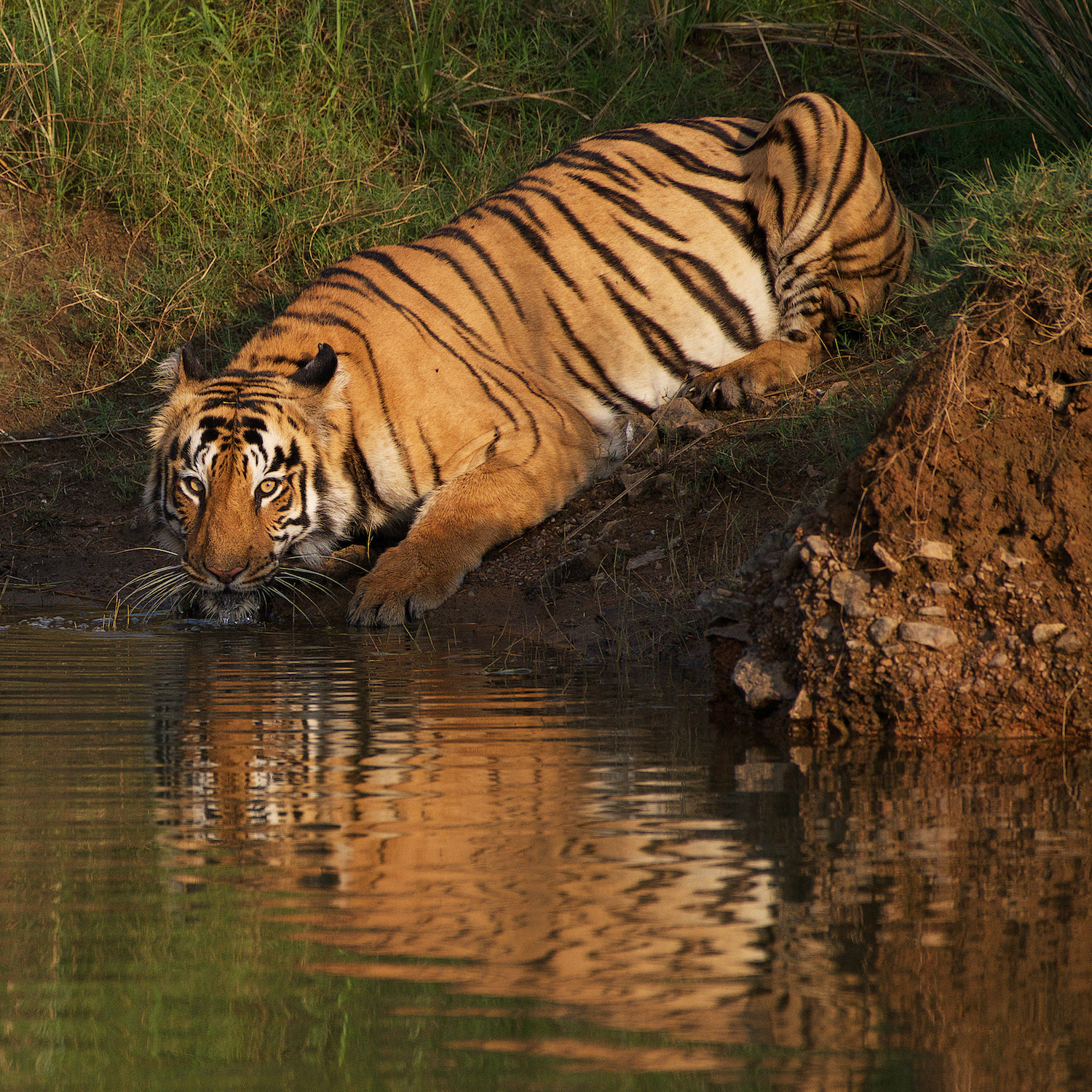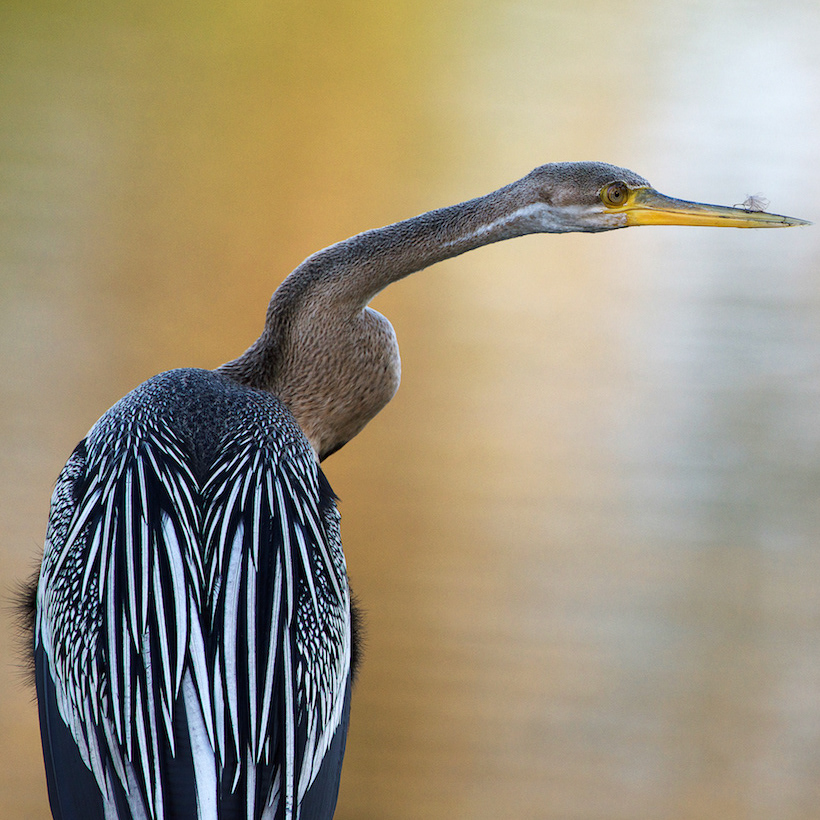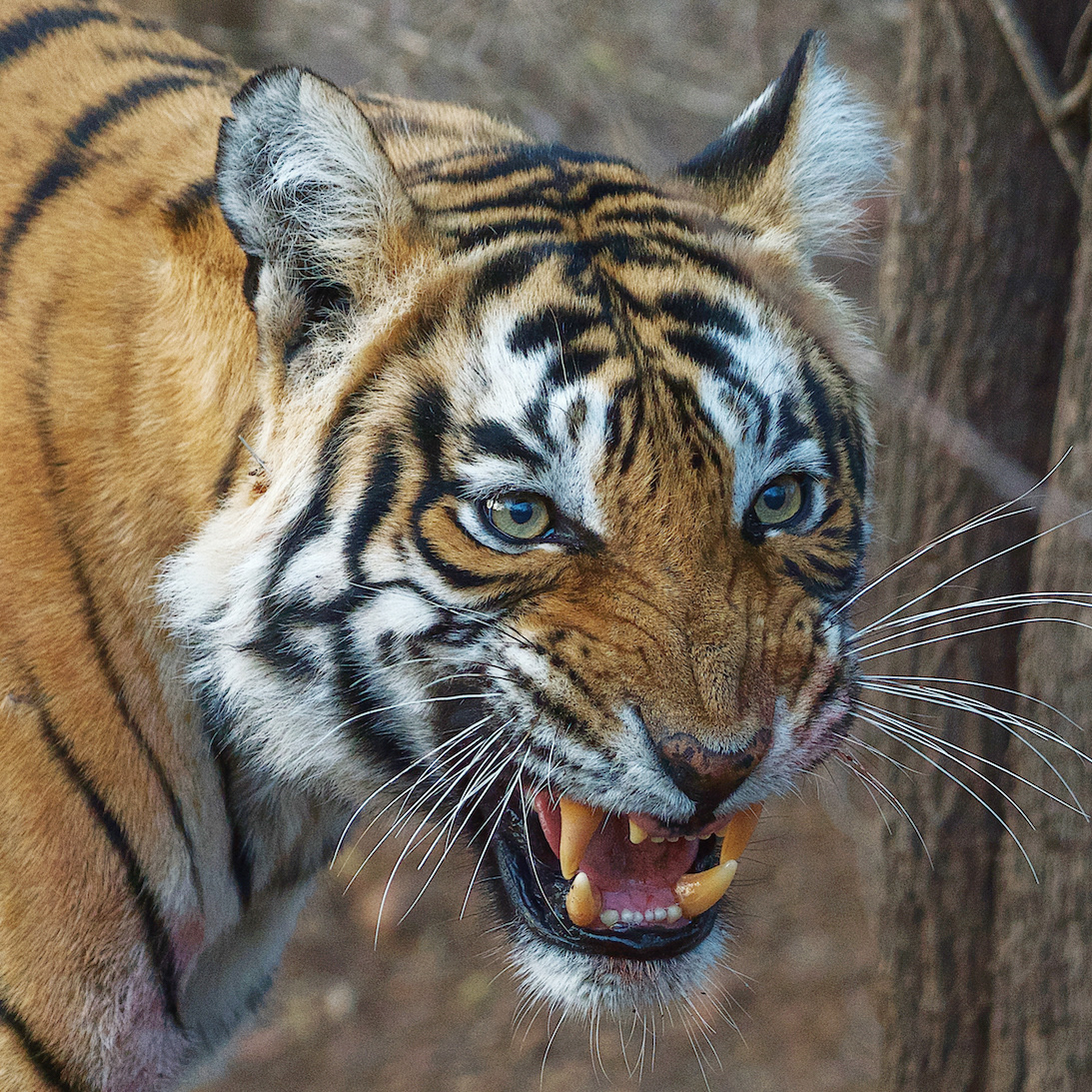Satpura Tiger Reserve is located in the Hoshangabad district of Madhya Pradesh in central India. We spent three days there in March 2020 and enjoyed the beautiful scenery and incredible wildlife. The Covid-19 pandemic was beginning to have an effect on tourism and the park was exceptionally quiet with visitors.



Satpura Tiger Reserve
Its name is derived from a range of seven hills called the Satpura Range. The park is rich in biodiversity and its rugged hills are covered in dense forests of teak and sal. The huge Tawa Reservoir forms the western boundary of the park which has broad meadows on its banks, adding to the variety of habitats which are home to the abundant wildlife.
SLOTH BEAR
(Melursus ursinus)
The Sloth Bear is native to the Indian subcontinent and is the most widespread bear species in India. They live in areas with generous forest cover and eat fruits, ants and termites.
We were extremely lucky to come across a mother with a very young cub. As there were very few visitors in the park, this allowed us to spend a good amount of time watching and photographing them. At around 3-4 months old, and being quite small, the cub took every opportunity to hitch a ride on its mother's back.
The mother lifts her head to show her long snout. Sloth bears mainly feed on ants and termites and use their long, curved claws to access rock-hard termite mounds or rotting tree trunks. They blow away the soil and dirt, close their nostrils and suck up the insects through a gap in their front teeth using their lips like a vacuum cleaner.
The young cub sits on a tree trunk and scrapes at the wood with its sharp claws, copying its mother's actions.
The youngster then decides to show off and climbs up a tree.
The mother bear, head down, bulldozes her way through the undergrowth, continually sniffing at the ground loudly, in search of food.
The pair are on the move again and the youngster clings onto its mother's back.
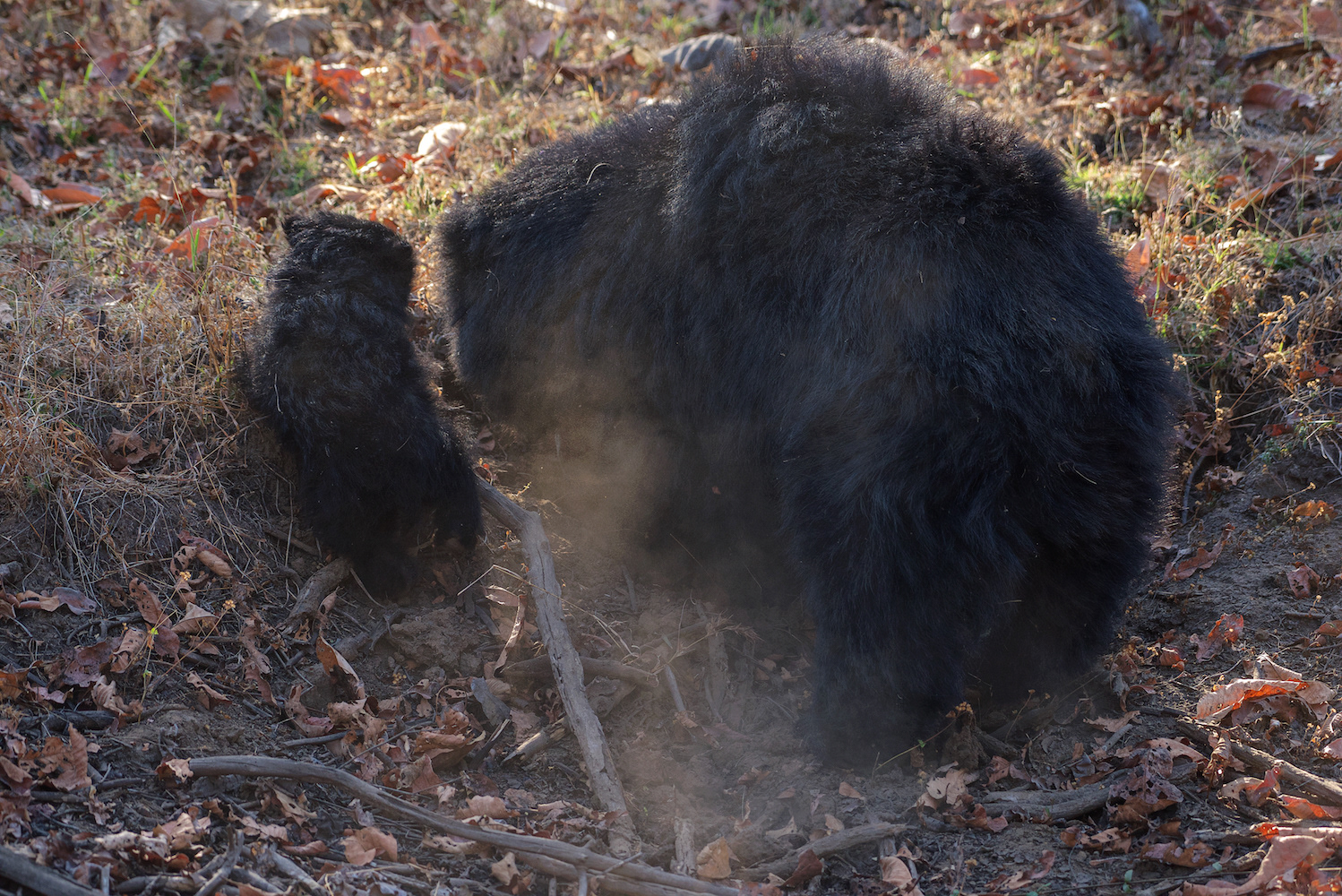


The cub stays close to its mother and she showers it with dust and dirt whilst digging for food.
Indian giant squirrel
(Ratufa indica)
Indian Giant Squirrel, also known as the Malabar Giant Squirrel is a large tree squirrel species endemic to the forests of India. As an upper-canopy dwelling species, it rarely leaves the trees. Its diet includes fruit, flowers, nuts and tree bark.
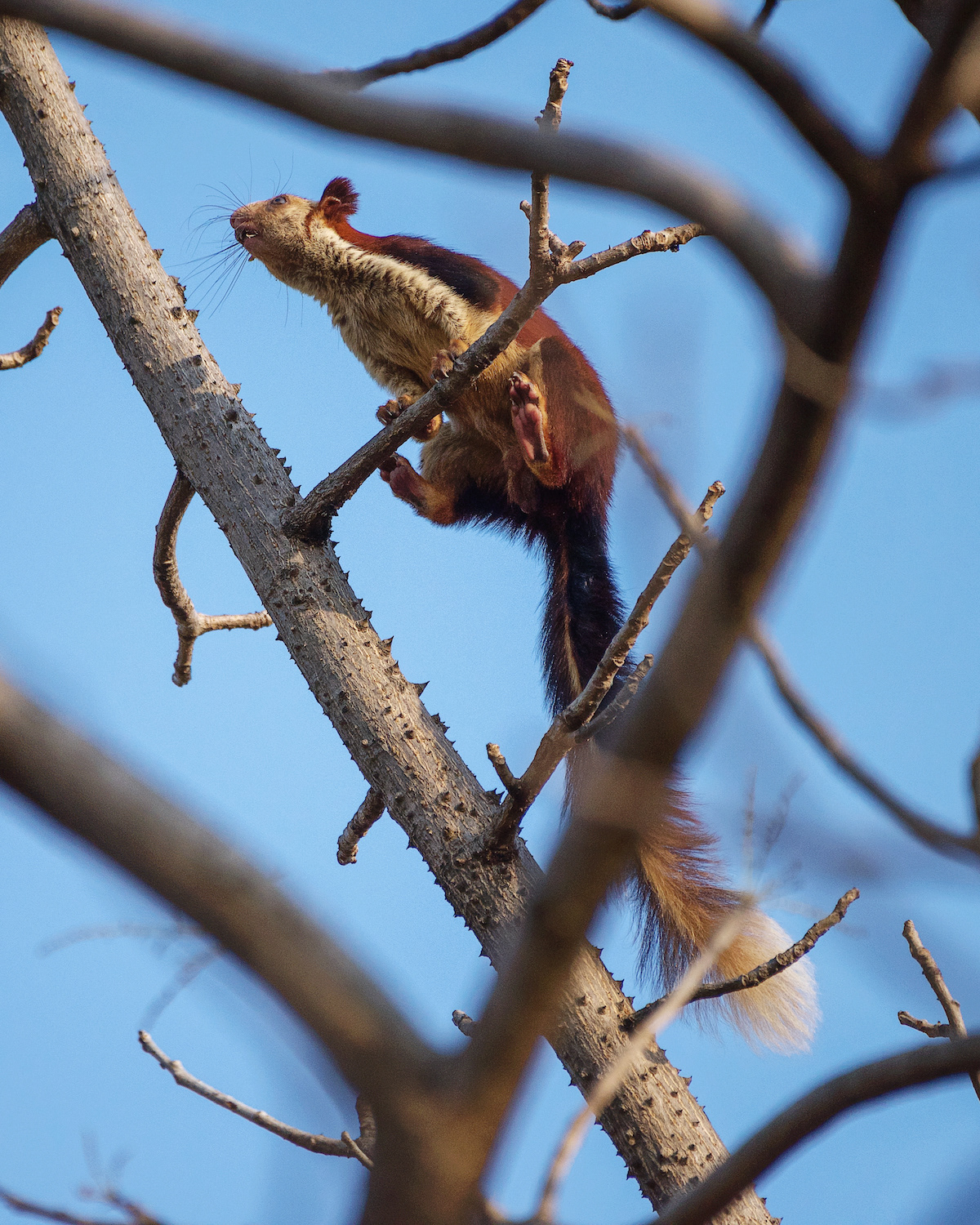
Indian Giant Squirrel or also known as the Malabar Giant Squirrel (Ratufa indica)

Indian Giant Squirrel or also known as the Malabar Giant Squirrel (Ratufa indica)

Indian Giant Squirrel or also known as the Malabar Giant Squirrel (Ratufa indica)
Indian Giant Squirrel (Ratufa indica)
Grey Langur (Semnopithecus entellus) watches a leopard moving through the undergrowth and the forest reverberates with the sound of alarm calls.
Male Sambar Deer (Rusa unicolor)
Male & female Sambar Deer (Rusa unicolor)
White-throated Kingfisher (Halcyon smyrnensis)
Grey Heron (Ardea cinerea) is a long-legged predatory wading bird.
Green Bee-eater (Merops orientalis) feeding on a butterfly.
Grey Heron (Ardea cinerea) takes flight from the water, with a crocodile in the background.
Photographs: ©Don Davies
COVID-19
On our last safari we were the only vehicle in the park and it actually closed when we left. Our next destination was to have been Pench, however, a couple of hours into our journey there we got a message that flights out of India were to be cancelled from the following day and so we needed to get to Nagpur airport as quickly as possible in order to fly back to Delhi. This was the start of a frantic journey to return to the UK and escape the possibility of being locked-down in India. Pench would have to wait!





